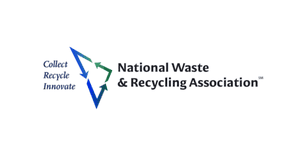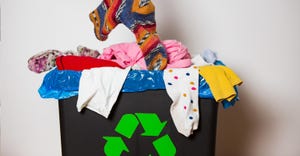NYC Takes on Recycling Quandaries

Every municipality faces unique recycling challenges, driven by geography, demographics, infrastructure, and/ or policy. Yet they fight some of the same battles. Yesterday Waste360 shared some of Atlanta’s story. In this article we share insight on what’s happening on the ground in New York City.
Half of New York City’s recyclables get thrown in the trash, which has been the case since 2005, and the city is working to get over that stubborn hump and capture and recycle more. Meanwhile, it’s up against some long-standing local challenges and some newer COVID-related ones.
The city uses several approaches to try and improve recycling rates, from educational campaigns geared to residents to formal training programs for building supers.
“Anecdotally we know that these approaches can be effective, but our biggest challenge is one of scale. Limited budgetary resources mean that the impact of these programs is diluted across 8.6 million people, 3.4 million households, and 40,000-plus buildings of 10 or more units,” says Bridget Anderson, deputy commissioner, Recycling and Sustainability, New York City Department of Sanitation (DSNY).
One barrier, especially common in cities, is related to existing infrastructure. Most New Yorkers live in multiunit housing that was not designed to be conducive to source separating recycling.
�“There aren’t many convenient places to drop off and store materials. And we’ve found if a building has trash chutes the recycling rate is less, as a lot goes down the chutes instead of to recycling areas, which may be in a basement or first floor. So, we talk of creating an equal playing field where it’s as easy to recycle as to throw away,” says Anderson.
Her team’s work is all about making sure buildings are set up properly and helping to motivate and educate property managers, building staff, and residents.
Some buildings are experimenting with retrofitting chutes to accommodate both recycling and trash, but the projects are expensive, and some properties have faced resulting technical or maintenance issues.
“So, we try and help create equal convenience for recycling and trash behavior within the limitations of the building. We also help address the question, ‘How do you create the right incentive structure to influence behavior, whether consequences or rewards?’” says Anderson. One approach that’s had some impact is lease riders that mandate recycling in order to avoid fines.
Training professionals is another core role of DSNY. The agency funds and facilitates workshops for architects and developers on how to design buildings for efficient sustainable waste management, focusing both on new buildings and retrofits of old ones.
The city also runs building maintenance staff training programs to explain what should or should not get recycled and how to set up collection spaces that work for individual communities.
Additionally, supers gain perspective by seeing what goes on outside of their walls. They visit materials recovery facilities to learn what happens to recyclables there. And they check out effective setups at other buildings while getting a chance to troubleshoot issues with staff there and other attending peers.
“It’s really beneficial to have supers help supers. They know best the multiunit recycling challenges and are most creative in finding solutions,” says Anderson, though DSNY has not had the resources to scale this tool.
But just about any person-to-person interaction can make a difference, whether it’s supers talking to supers, or residents talking to residents, depending on the goal.
Often, staff work with “resident champions,” so it’s not all on supers to get people to recycle. And resident peer pressure can prove effective. Conversations in general help to motivate, and there are “aha” moments when people talk to each other, says Anderson.
The messenger does not necessarily have to be living and breathing. Instructional posters, mailers, and flyers placed under residents’ doors are some tools to fortify understanding of recycling as well as the will to do it. Education also comes in the form of motivational campaigns and “how to” information, including free recycling bin decals and an interactive web tool explaining how to “get rid” of specific discards.
New York’s recycling challenges have been amplified through COVID.
This has actually been an issue across regions, notes Craig Wittig, director of community programs for The Recycling Partnership (TRP), a nonprofit focused on improving recycling in the U.S. who has worked with New York City and multiple municipalities.
“In a COVID environment processes are more expensive, but we have less budget due to more competition for government funding. Less money and more need equals serious challenges for government when it comes to recycling,” Wittig says.
Reduced resources and exposure risk have forced some jurisdictions, such as Columbia, Mo., to halt recycling for now. Other regions like Baltimore, MD temporarily stopped, but while they have not gone back to curbside, they have begun doing drop off.
New York City suspended organics collection but has managed to stay on course with traditional recycling because of long-term contracts. Still, the program has come under fiscal scrutiny.
“The city’s budgetary strain is deep, and we will continue to feel pressure to make more cuts as we face what is predicted to be a multi-year fiscal crisis,” says Anderson.
In “normal” times, there are still the questions: what approaches work best, and just how effective are they at moving the needle? The city was on its way to trying to quantify outcomes but hit a detour earlier this year.
DSNY had been working with TRP on an experiment to include funding staff training, coupled with education and enforcement (ticketing) in zones with low recycling rates, and to gather data about the impact of these activities on diversion.
“This project was supposed to run throughout 2020 but was put on hold due to COVID-19. We hope to be able to run this experiment in the future should funding be available,” says Anderson.
About the Author
You May Also Like




